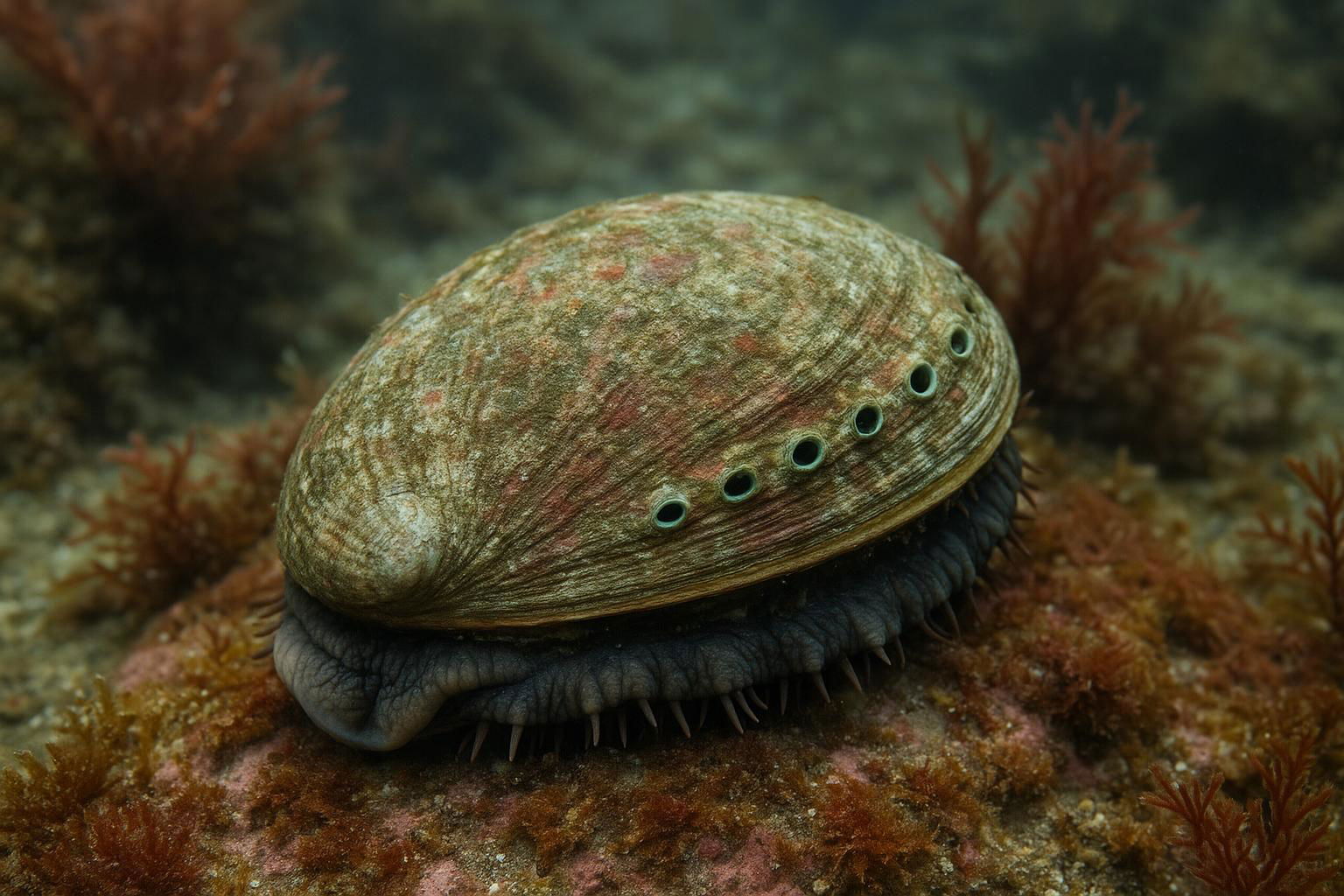
Pacific Abalone
Haliotis discus hannai
The Pacific Abalone, scientifically known as Haliotis discus hannai, is a marine gastropod mollusk famed for its distinctive ear-shaped shell, which is often iridescent and displays a captivating mix of colors like green, blue, and silver. This species is native to the coastal waters of the western Pacific Ocean, particularly around Japan and Korea. Characterized by its flat, oval shell with a series of respiratory pores along one edge, the Pacific Abalone is adapted to cling tightly to rocky substrates in the turbulent intertidal and subtidal zones.
This species primarily feeds on algae, using its radula—a specialized feeding organ—to scrape off food from the rocks. The Pacific Abalone is a slow-growing species, reaching maturity in several years, and is highly valued both ecologically and commercially. It plays a vital role in its ecosystem as both a grazer and prey for various predators, while also being prized for its meat and the beauty of its shell in the seafood and decorative markets. Conservation efforts are crucial for this species due to threats from overfishing, habitat destruction, and climate change challenges.

 All Species & Breeds
All Species & Breeds
 Highland Cattle
Highland Cattle
 Miniature Donkeys
Miniature Donkeys
 All Species Directory
All Species Directory
 Highland Cattle in Virginia
Highland Cattle in Virginia
 Miniature Donkeys in Texas
Miniature Donkeys in Texas












